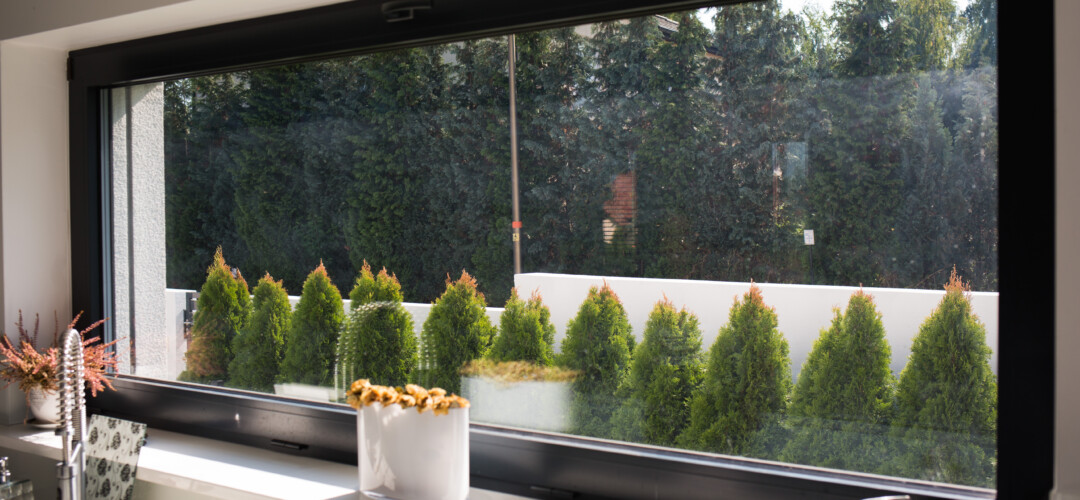A kitchen window serves not only as a source of light but also as a crucial element influencing the comfort and aesthetics of the space. How can you combine your dream design with practical solutions? Here are expert tips to help you choose the perfect window for your kitchen!
Why is choosing the right kitchen window so important?
The kitchen is the heart of every home. It’s where we prepare meals, spend time with family, and entertain guests. Therefore, this space needs to be functional, cozy, and well-lit. The window plays a key role here, not only allowing natural light in but also positively affecting the atmosphere. A poorly chosen window joinery can lead to issues with ventilation, moisture, and excessive external noise.
Benefits of a kitchen with a window
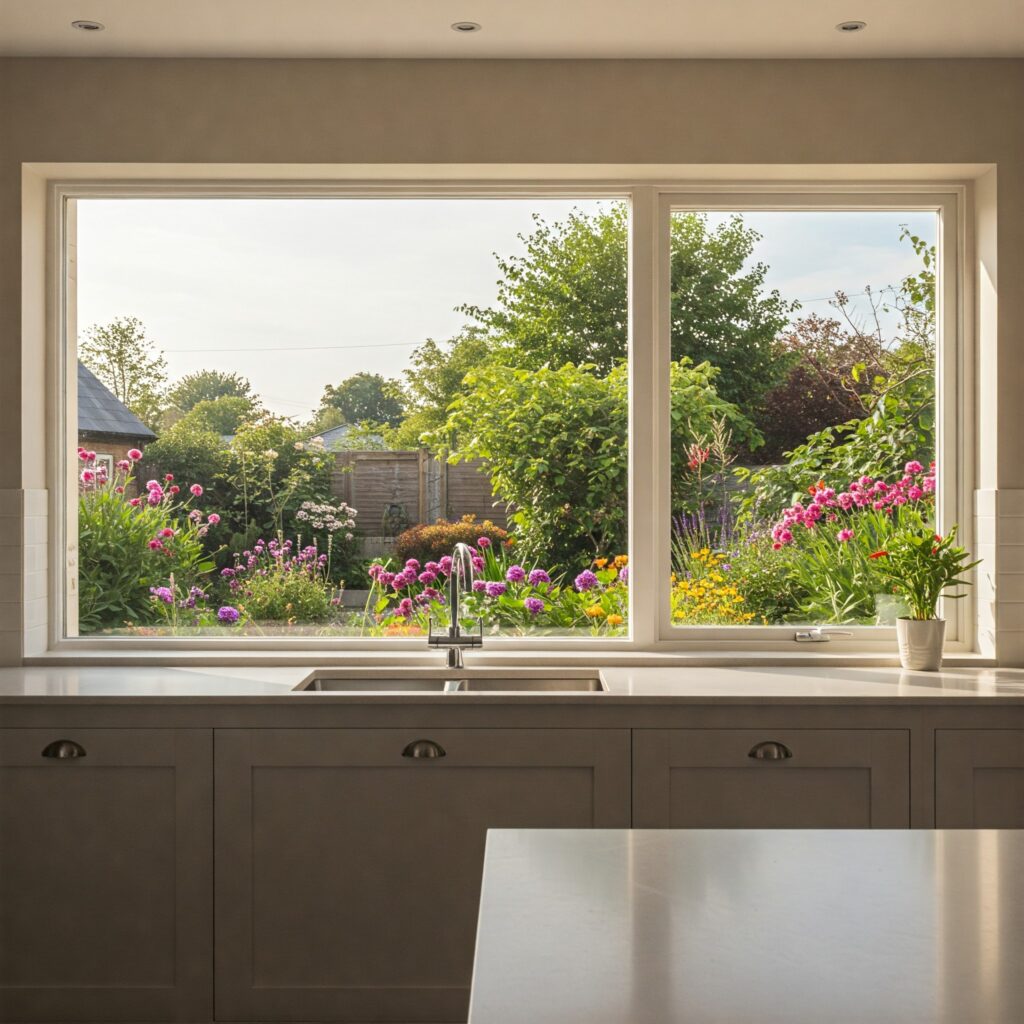
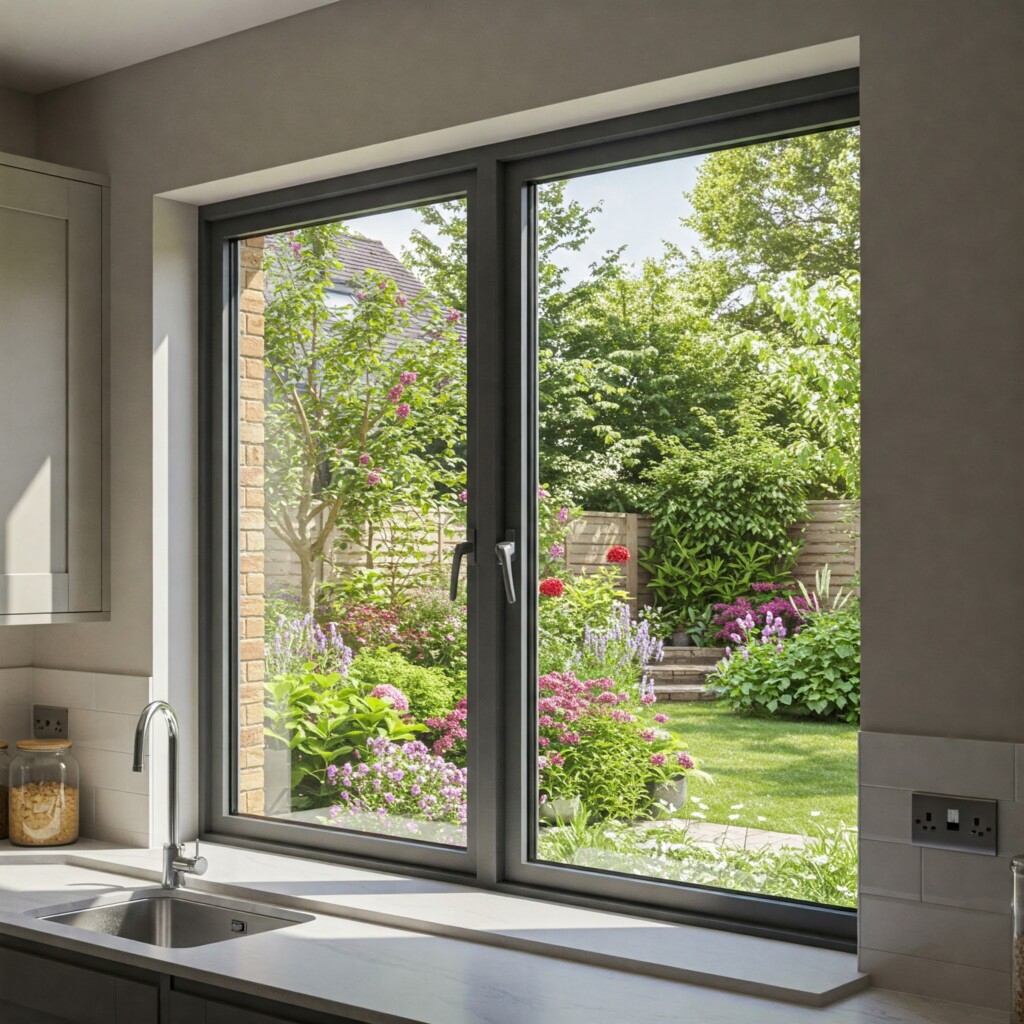
- Access to Natural Light
Proper access to light allows us to prepare meals without the need for artificial lighting. Natural light also positively impacts our mood and health. - Ventilation Capability
Effective kitchen ventilation is essential for maintaining a healthy indoor climate. Cooking generates moisture and volatile organic compounds that can negatively affect air quality. Regular airing through an open window enables quick air exchange, reducing the risk of mold development and eliminating unpleasant odors. - Views
Mornings with a cup of coffee and a blooming garden outside the window? Even daily chores take on a new dimension when accompanied by a changing landscape. Each season paints a different picture, and you can enjoy them all! A well-placed window not only provides light but also visually enlarges the space, making the kitchen feel more spacious. - Design Element
The window is an integral part of the kitchen’s arrangement, influencing its style and character. Various sizes, materials, and colors allow for customization to individual preferences, interior style, or building facade. Modern window joinery with large glazing can be minimalist and elegant, while more classic windows with muntins add a traditional touch to the kitchen. - Better Temperature Control
Modern windows feature high thermal insulation parameters, translating to better temperature control in the kitchen. In winter, they minimize heat loss, reducing heating costs, and in summer, they prevent excessive heating, ensuring thermal comfort even on hot days. Additional protection against heat can be provided by external blinds or facade blinds.
Types of kitchen windows
To facilitate an informed choice, we’ve prepared an overview of available solutions, considering the specifics of the kitchen space. When selecting window joinery, it’s important to consider not only the frame material, opening method, or construction type but also the possibility of using special elements, such as sun protection glass coatings, which significantly improve comfort during summer.
Based on frame material
Aluminum Windows
Modern and elegant, characterized by lightweight construction and high resistance to weather conditions. Ideal for kitchens with a minimalist or industrial style.
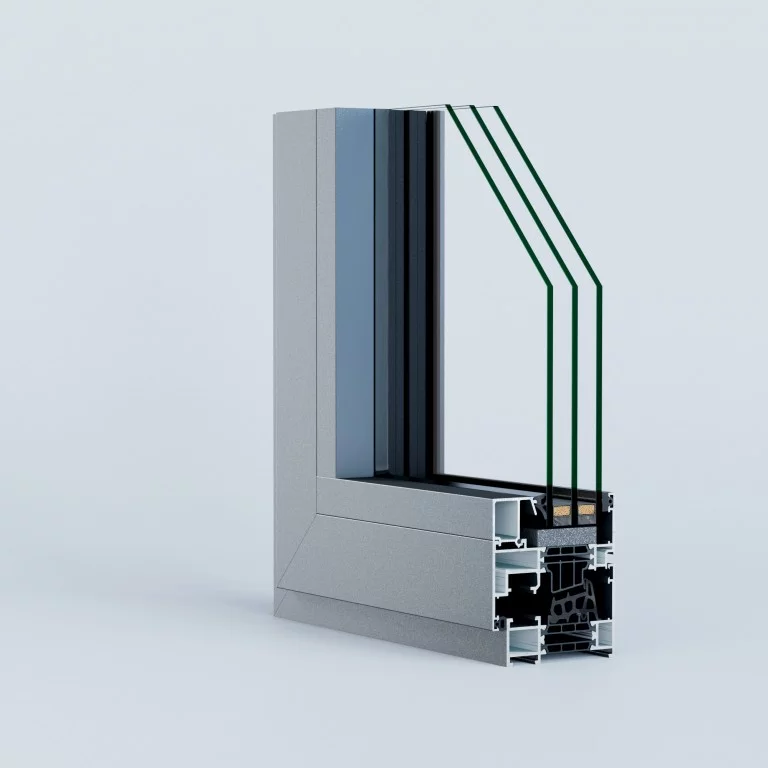
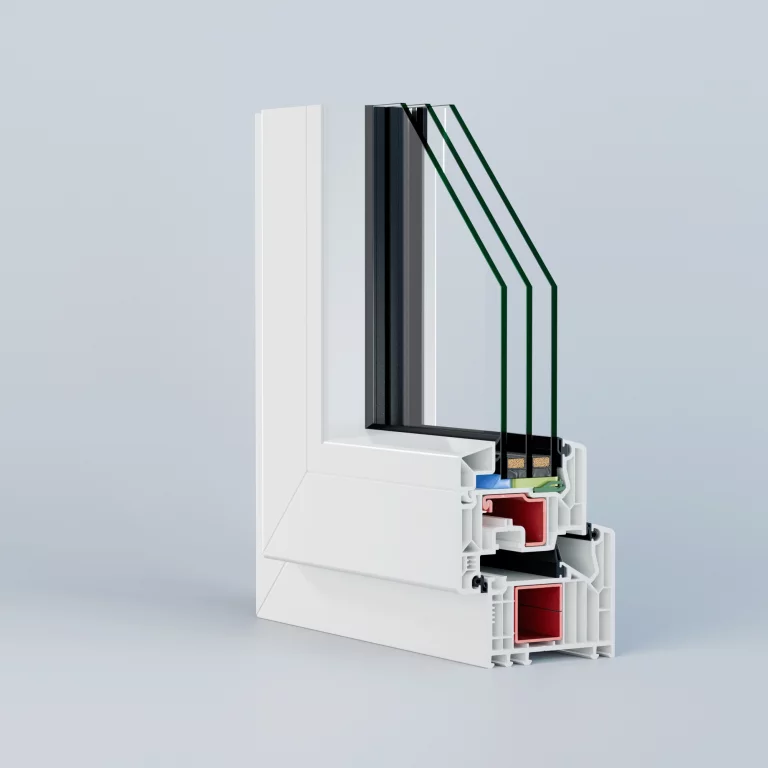
PVC Windows
A proven choice – easy to maintain, moisture-resistant, and cost-effective. PVC windows are available in a wide range of colors and finishes, including wood-like or metallic structures, allowing for almost unlimited design possibilities.
Based on the opening method
- Side-hinged windows
Allow full opening, making it easier to ventilate the kitchen after cooking or frying. However, it’s worth considering whether the open sash might interfere with cabinets or kitchen appliances. - Tilt windows
Enable discreet ventilation – perfect while cooking when you want to avoid drafts. They work well in kitchens where the window is located above a countertop. - Tilt-and-turn windows
The most versatile option for the kitchen, combining the advantages of side-hinged and tilt windows. They allow for both intense and gentle ventilation.
- Sliding windows
Save space in the room, which is especially important in small kitchens or where a traditional tilt window might interfere with cabinets, appliances, or accessories. - Fixed windows (fix)
Especially popular for corner windows, they provide maximum natural light and a panoramic view. Ideal where ventilation can be provided by other windows. Often used in modern designs where minimalist aesthetics and large glazing are a priority.
Based on construction type
- Corner windows
A striking and popular solution in modern construction that visually enlarges the kitchen and lets in plenty of natural light. Ideal for contemporary arrangements. We discuss this type of window in more detail in the next section. - Panoramic windows
Provide impressive views and maximum daylight – ideal for kitchens with a view of the garden or terrace. Thanks to their size, panoramic windows literally open the kitchen to the surrounding landscape.
- Single-sash windows
A simple and functional option, suitable for smaller kitchens as they don’t take up much space. - Double-sash windows
Provide better natural lighting and improve ventilation. Well-suited for larger kitchens.
Corner windows in the kitchen
Corner windows are one of the most interesting trends in contemporary interior design. They make the space brighter, more spacious, and stylish. This solution not only ensures more natural light but also offers panoramic views of the surroundings. Modern corner windows blend well with both minimalist and more classic kitchen arrangements, adding elegance and a modern character.
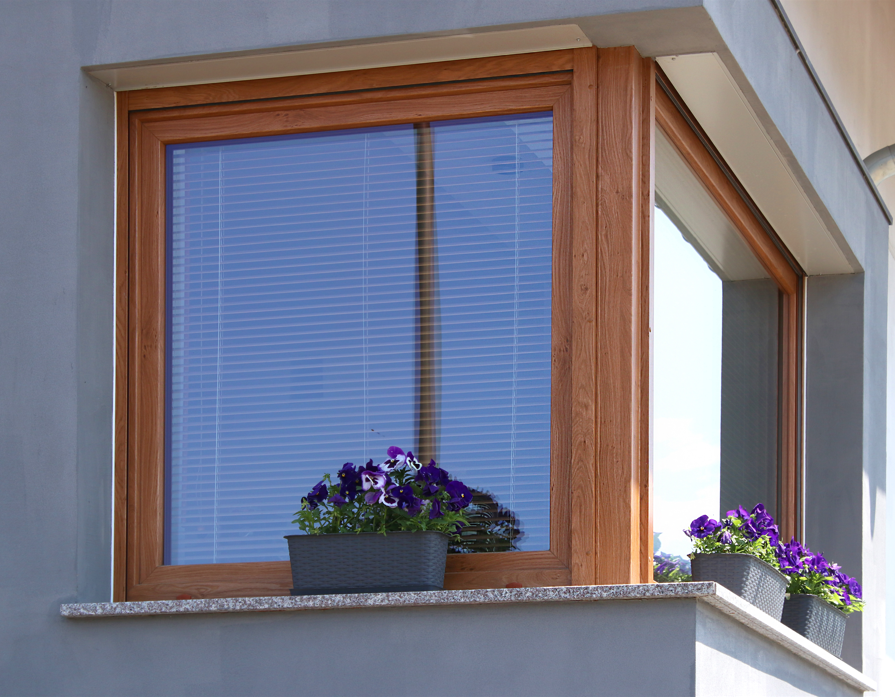
Factors to consider when choosing a kitchen window
You already know the advantages and types of kitchen windows. Now let’s look at what you should pay attention to make an informed decision. The kitchen is a space where functionality should go hand in hand with aesthetics. Below, we present the key factors that will help you plan this combination most effectively.
Kitchen Size
In small kitchens, every centimetre counts, so it’s worth opting for solutions that don’t take up valuable space. These can be smaller windows or tilt windows that don’t occupy much space when opened. In spacious kitchens, panoramic or corner windows that let in a lot of natural light and become a dominant design element are more suitable. Large glazing also visually enlarges the space, which is especially important in kitchens connected to the living room or dining area.
However, in a small kitchen, where there isn’t enough space to tilt a window open freely, it’s worth considering a large fixed window (non-opening). A good compromise might be a sliding window, which doesn’t take up any room when opened. In a kitchen, including some form of ventilation is essential, especially if there are no other windows nearby. In some cases, a micro-ventilation function may be sufficient to prevent the buildup of steam and moisture.
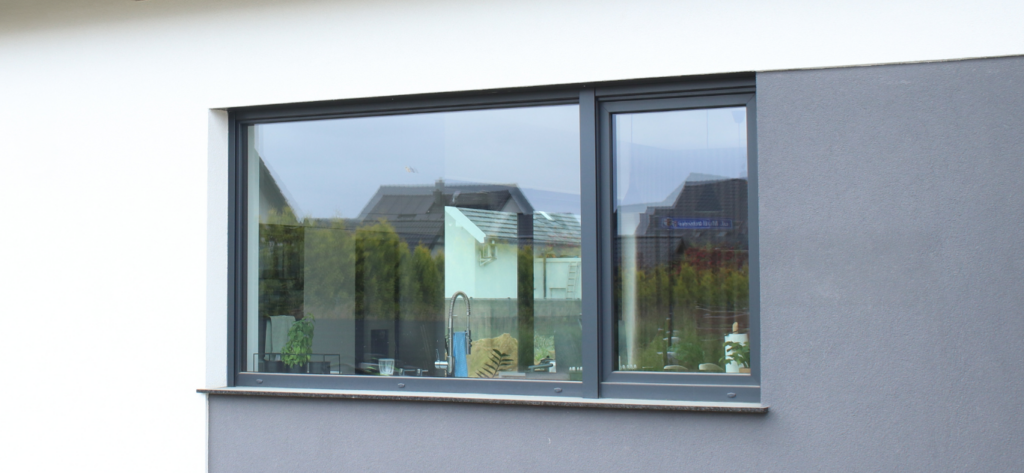
Window placement, above the countertop
Just as important as the window size is its placement concerning the kitchen work zone. A window above the countertop will provide optimal lighting while cooking, while a window next to the dining table will create a pleasant atmosphere during meals. Don’t forget about the direction the window faces. South-facing windows guarantee a bright, sunny kitchen – but during summer, they can cause excessive heat unless covered with blinds or shutters. North-facing windows, on the other hand, offer even, diffused light throughout the day.
Frame Material
PVC windows are a reliable choice – they are easy to maintain, moisture-resistant, and budget-friendly. Aluminum, on the other hand, is synonymous with elegance and durability, and its slim profiles perfectly complement minimalist interiors. Although aluminum windows can impress with their subtle aesthetics, it’s worth remembering that a wide range of PVC finishes and colors also offer almost unlimited design possibilities – from classic finishes to textures that faithfully replicate wood or metal. When choosing the material, maintaining harmony is key – the window should not only match the façade but also coordinate with doors and other joinery to create a cohesive, well-thought-out whole.
Glass Panes

For a kitchen facing a busy street, the best choice might be glass with enhanced sound insulation. Such a location can cause unwanted noise, but it may also attract the attention of passersby. If sun protection alone isn’t enough, you can, for example, install patterned glass, which reduces transparency and blurs the view. If your kitchen gets a lot of sunlight, it’s worth considering glass with solar-control coatings that absorb light.
Style and aesthetics
The kitchen window is an important design element. It should harmonize with both the interior decor and the building’s facade. Large glazing and slim aluminum profiles work perfectly in modern kitchens, giving the space a sense of lightness and elegance. In more classic interiors, PVC windows in warm wood tones can highlight the cozy character of the space. The choice of fittings and finishing details also matters – a minimalist handle and concealed hinges emphasize a modern style, while decorative muntins can add traditional charm to the interior.
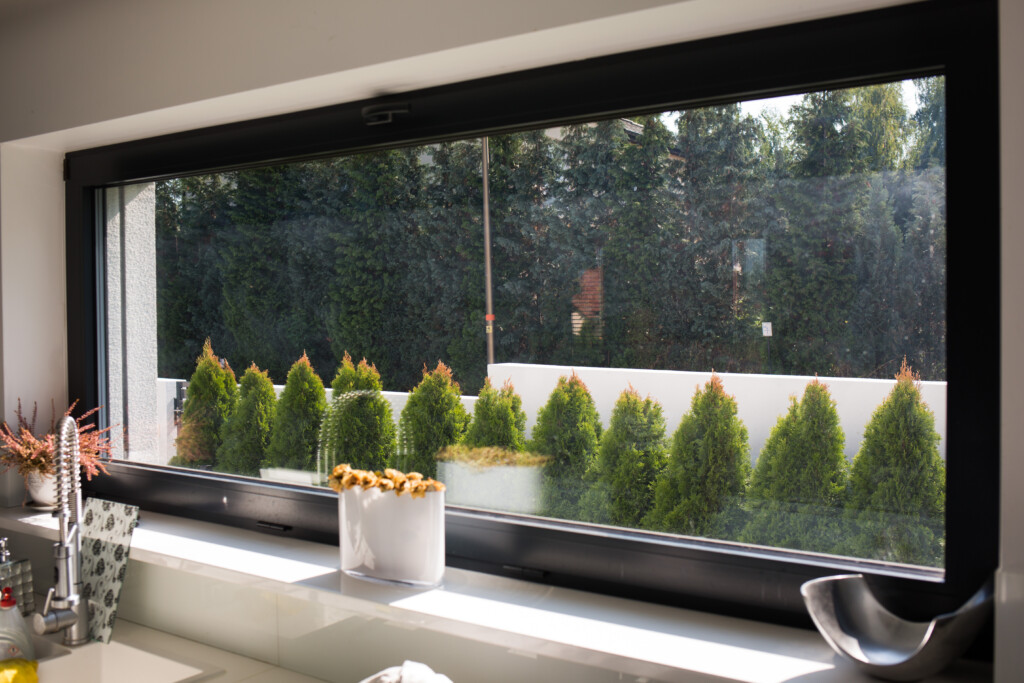
Summary
The choice of window has a huge impact on everyday life in the kitchen. This is where we spend many important moments – starting the day, preparing meals, and gathering with loved ones. Properly selected window joinery can provide the right lighting, thermal comfort, and good ventilation. A well-thought-out decision will affect the kitchen’s usability and comfort for years to come. If you need professional advice on choosing a kitchen window, please fill out the form below or write to this address.
FAQ
Want the ideal kitchen window?
Get in touch:
